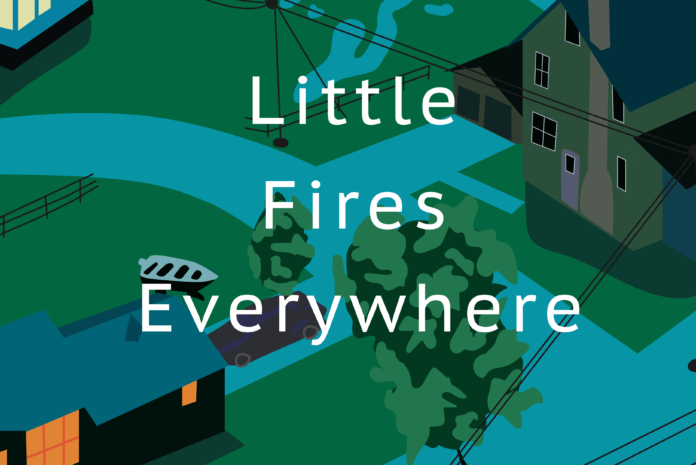A novel that thrives on subtleties becomes a gripping TV drama — and loses most of its charm
American writer Celeste Ng’s second novel “Little Fires Everywhere” was published in 2017 and met with generally positive reviews. The novel takes place in Shaker Heights, Ohio, the small town where Ng grew up.
The story follows two mothers with different backgrounds as their lives become increasingly intertwined. Ng contemplates themes such as class differences and small-town politics with an understated tension that gradually builds throughout the novel. The point of view shifts from character to character seamlessly, making the novel well-rounded and multi-dimensional.
“It’s this vast and complex network of moral affiliations — and the nuanced omniscient voice that Ng employs to navigate it — that make this novel even more ambitious and accomplished than her debut,” writes Eleanor Henderson in The New York Times.
On March 8, a miniseries based on the novel debuted on Hulu, with Reese Witherspoon and Kerry Washington starring as the conflicting protagonists. The series received a score of 77% on Rotten Tomatoes and has been praised most strongly for the cast’s performances.
“‘Little Fires Everywhere’ is one of those rare multi-generational dramas where the arcs involving the kids are every bit as good as the adults, as the conflicts gradually build,” writes Brian Lowry in an article for CNN. “Indeed, while Witherspoon and Washington understandably have some of the showiest moments (both are producers on the project), the series has the feel of a true ensemble piece in all the best ways.”
While the series closely follows the plot of the novel, there are moments where the series purposefully strays. One negative change the series made was magnifying and overdramatizing the tension between Witherspoon’s and Washington’s characters, Elena and Mia. Replacing Ng’s nuanced character interaction in favor of more dramatic and emotional scenes distracts viewers from the subtle complexity the novel imbues in the characters.
“In the novel, neither protagonist is fully wrong or fully right,” Constance Grady writes for Vox. “They’re both understandable enough to be sympathetic, and they also both make plenty of mistakes. But on the TV show, there is clearly a correct party and an incorrect party nearly every time Elena and Mia interact. And generally, Elena is the incorrect one.”
What made the novel so fascinating was the omniscient narration and entry into the minds of many vastly different characters. Readers understood the background behind characters like Elena, which made her behavior more human and nuanced. The series sees the characters in black and white, whereas Ng navigates her prose excellently in the grays.
The most significant change the series made, however, was in altering the entire ending — that is, who started the fires in the Richardsons’ home.
“I actually hope it took the end of the book and it just added even more complexity and layers to it because we had the space to do that,” said executive producer Liz Tigelaar in an article in the Los Angeles Times. “In the book, you know basically from the beginning, on the first page, that [Izzy] started this fire. We liked the idea of doing more of an overarching mystery, so that we didn’t really have the answer to the end at the beginning.”
It is obvious that the series aimed to expand the universe of the novel to make it more hard-hitting and dramatic. While some of these changes were positive, such as allowing for more emphasis on the racial differences between the characters, it also took away from some of the novel’s essence. Ng’s “Little Fires Everywhere” was a character piece about flawed people in a small town; she allowed the readers to come to their own conclusions after reflecting on the issues presented in the novel within themselves. The television series makes all the decisions for you while trying to force drama and excitement in places it isn’t meant to be.
Written by: Alyssa Ilsley — arts@theaggie.org




